Texas cichlid - Herichthys cyanoguttatus
Scientific name: Herichthys cyanoguttatus
Common name: Texas cichlid
Family: Cichlidae
Usual size in fish tanks: 25 - 30 cm (9.84 - 11.81 inch)
014
Recommended pH range for the species: 6.5 - 7.5
Recommended water hardness (dGH): 5 - 12°N (89.29 - 214.29ppm)
0°C 32°F30°C 86°F
Recommended temperature: 22 - 28 °C (71.6 - 82.4°F)
The way how these fish reproduce: Spawning
Where the species comes from: North America
Temperament to its own species: aggressive/territorial
Temperament toward other fish species: aggressive/territorial
Usual place in the tank: Middle levels
Origin
The Texas Cichlid is a natural species that is found in the USA, they have not been introduced originally in Central America but colonies have been introduced further afield.
Lifespan
10-12 years. Sometimes more.
Short description
The Texas Cichlid displays a beautiful colouration but don’t be fooled by its appearance. This fish is highly territorial and will be aggressive towards other species of fish and even breeding can be difficult as the males may show aggression towards the females.
They inhabit slow moving waters that are dense with vegetation, these conditions should be replicated in the aquarium by keeping the water flow at a low rate. They are well known for being substrate diggers so growing live plants can be a problem but they are happy with minimal décor such as terracotta pots or even a few rocks. Artificial plants can be added but these will be moved around by this fish.
Like all large cichlids they are high waste producers so use a suitable filtration system and back this up with regular water changes on a weekly basis.
Feeding
Give them live food as well as vegetables based food which is bloodworms, tubifex, spinach, granules, tablets, small fish. These are not fussy eaters, they will accept quality flakes or pellets but you must supplement this with treats of live or frozen foods. For extra vegetable matter, spirulina flakes are ideal.
Sexing
Males are larger than females. Males may also develop extended finnage as they mature and some may even develop small nuchal humps on their forehead.
Breeding
Texas cichlids lay eggs on a previously cleaned rock. Female can lay from 200 to 1000 eggs at one time. Then the are fertilized by male. When eggs hatch, remove or divide parents from fry. Fry should be fed Artemia salina.
Extreme care should be taken when introducing the female to the male, the males have been known to kill females with their aggression so be ready to separate them if signs of this happening occurs.
Both parents will show parental care and guard the fry from any danger, often rounding them up in their mouths to group to a safer spot.
Additional information and picture
Thanks to Jan Wirén for allowing us to use his picture. The second picture was sent to us from one visitor.
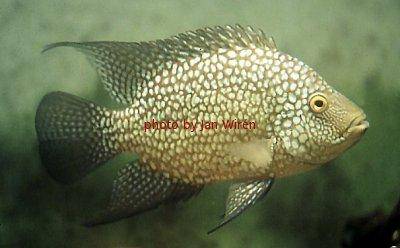


 Thread-finned
Thread-finned  Acara
Acara  Yellow
Yellow 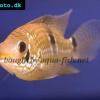 Aequidens
Aequidens  Blue
Blue  Green
Green  Acara
Acara  White
White  Compressed
Compressed  Pastel
Pastel 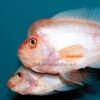 Midas
Midas  Red
Red  Bluemouth
Bluemouth 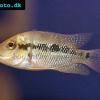 False
False  African
African  Agassiz's
Agassiz's  Banded
Banded  Yellow
Yellow  Cockatoo
Cockatoo  Blue
Blue  Blackstripe
Blackstripe  Highfin
Highfin 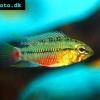 Redstripe
Redstripe  Threadfinned
Threadfinned  Macmaster’s
Macmaster’s 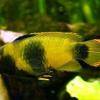 Panda
Panda 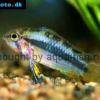 Norbert’s
Norbert’s  Blue
Blue 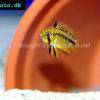 Thin-line
Thin-line 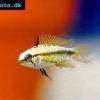 Three-striped
Three-striped 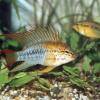 Viejita
Viejita  Flier
Flier  Archocentrus
Archocentrus  Convict
Convict  Seven
Seven 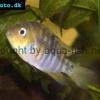 Blue-eye
Blue-eye  Spiny
Spiny  Oscar
Oscar  Sunshine
Sunshine  Chitande
Chitande  Firebird
Firebird  Midnight
Midnight 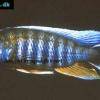 Lake
Lake 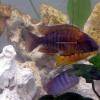 Sunshine
Sunshine 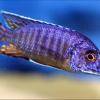 Aulonocara
Aulonocara 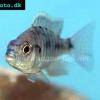 Nyasa
Nyasa  Ruby
Ruby  Grants
Grants  Aulonocranus
Aulonocranus 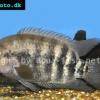 Chameleon
Chameleon 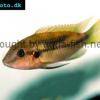 Benitochromis
Benitochromis  Orinoco
Orinoco  Yellow
Yellow  Brichard’s
Brichard’s  Guenther’s
Guenther’s  Cichla
Cichla  Peacock
Peacock  Chiseltooth
Chiseltooth 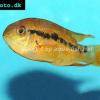 Bolivian
Bolivian 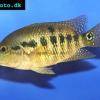 Red
Red 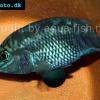 Many-pointed
Many-pointed  Jack
Jack  Red
Red 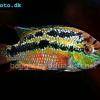 Yellow
Yellow  Three
Three 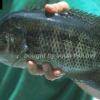 Mayan
Mayan  Keyhole
Keyhole  Azureus
Azureus  Red
Red 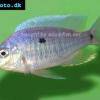 Jackson’s
Jackson’s  Crenicichla
Crenicichla  Honduran
Honduran  Afra
Afra  Frontosa
Frontosa  Slender
Slender 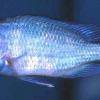 Malawi
Malawi  Chequerboard
Chequerboard 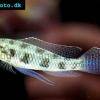 Checkerboard
Checkerboard  Malawi
Malawi 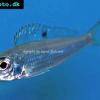 Ectodus
Ectodus  Tanganyika
Tanganyika  Canara
Canara 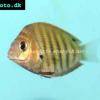 Green
Green 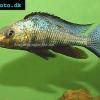 Rostratus
Rostratus 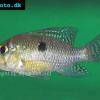 Pearl
Pearl  Geophagus
Geophagus  Yellowhump
Yellowhump  Suriname
Suriname 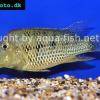 Redhump
Redhump  Red
Red 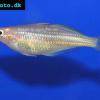 Dority’s
Dority’s  Argentine
Argentine  Burton’s
Burton’s  Victoria
Victoria 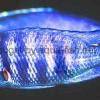 Haplochromis
Haplochromis 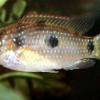 Jewel
Jewel  Banded
Banded  Lifalili
Lifalili 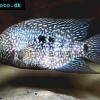 Lowland
Lowland  Pantano
Pantano  Severum
Severum  Banded
Banded  Severum
Severum  Rainbow
Rainbow 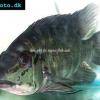 Parrot
Parrot  Chocolate
Chocolate  Brown
Brown  Marlieri
Marlieri  Golden
Golden  Striped
Striped  Masked
Masked 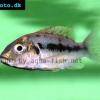 Konye
Konye  Blue
Blue  Trewavas
Trewavas  Electric
Electric  Dwarf
Dwarf  Redbreast
Redbreast  Lamprologus
Lamprologus  Gold
Gold 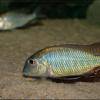 Greenface
Greenface  Aurora
Aurora  Blue
Blue  William’s
William’s  Zebra
Zebra 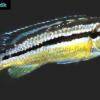 Malawi
Malawi  Blue
Blue 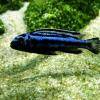 Blue
Blue  Mbuna
Mbuna  Parallel
Parallel  Purple
Purple  Flag
Flag  Bolivian
Bolivian  Ram
Ram  Basket
Basket  Haitian
Haitian  Zebra
Zebra  Striped
Striped 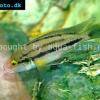 Neolamprologus
Neolamprologus  Brevis
Brevis  Fairy
Fairy  Neolamprologus
Neolamprologus 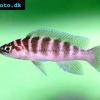 Cylindricus
Cylindricus  Hecq’s
Hecq’s  Neolamprologus
Neolamprologus  Lemon
Lemon  Mustax
Mustax  Daffodil
Daffodil  Six-bar
Six-bar 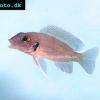 Five-bar
Five-bar  Marbled
Marbled 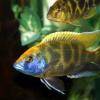 Giraffe
Giraffe  Blue
Blue  Sulphurhead
Sulphurhead  Wolf
Wolf  Jaguar
Jaguar  Blue
Blue  Marakeli
Marakeli  Madagascar
Madagascar 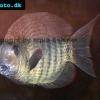 Pinstripe
Pinstripe  Pelmatochromis
Pelmatochromis  Kribensis
Kribensis 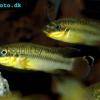 Striped
Striped  Red
Red 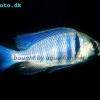 Deepwater
Deepwater  Fenestratus
Fenestratus  Nichols’
Nichols’  Southern
Southern 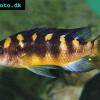 Bumble
Bumble  Demason’s
Demason’s  Slender
Slender  Red
Red  Mbuna
Mbuna  Malawi
Malawi  Kenyi
Kenyi  Powder
Powder  Altum
Altum  Angelfish
Angelfish  Angelfish
Angelfish  East
East 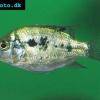 Juba
Juba  Earth
Earth  Electric
Electric  Azure
Azure  Lionhead
Lionhead  Discus
Discus  Blue
Blue 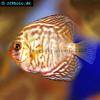 Zebra
Zebra  Red
Red  Brichard’s
Brichard’s  Blue
Blue  Firemouth
Firemouth  Zebra
Zebra  Blue
Blue  Dwarf
Dwarf 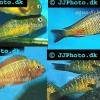 Blunthead
Blunthead 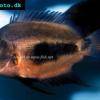 The
The 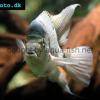 White
White  Twoband
Twoband 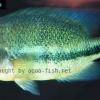 Vieja
Vieja  Window
Window 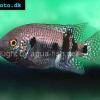 Southern
Southern  Tailbar
Tailbar  Black
Black 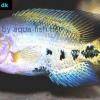 Redhead
Redhead 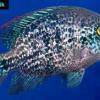 Oaxaca
Oaxaca  Xenotilapia
Xenotilapia